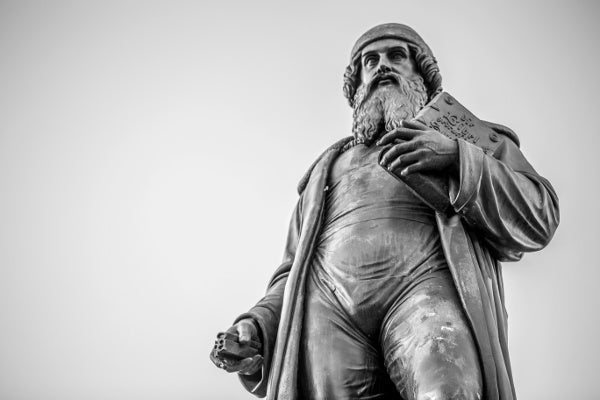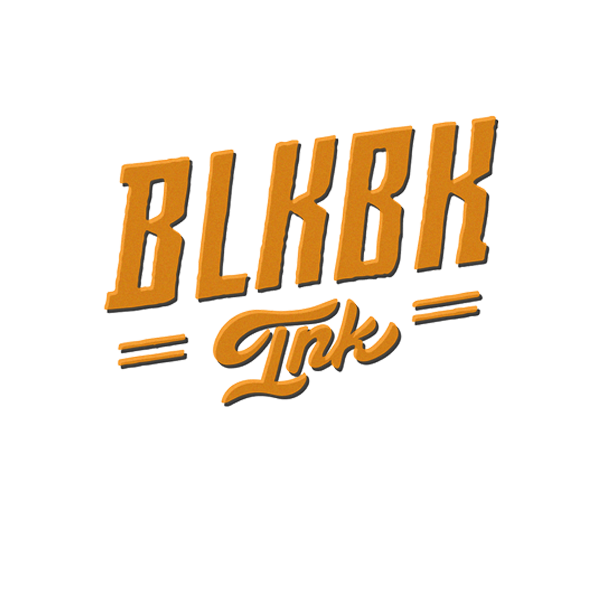How the original font foundry founded the Modern Era
BLKBK is a font foundry. That reads like a fun metaphor—comparing a company that designs something as abstract as letters to a factory that produces something as real as steel. But there’s a reason BLKBK is a font foundry and not a studio, mill, factory, or plant.

About 650 years after Alcuin of York set out his life’s work for the Frankish king Charlemagne, a smith in Mainz—a city in the Frankish heartland—set out his life’s work: a hand mould. This simple device featured a shape punched into a matrix of soft metal and enclosed above, forming a space to receive a molten, soft alloy, making a casting.
This was a great way to quickly make small, intricately detailed bits of metal—a solid invention. But compared to developing an original type for a burgeoning empire, a handy way to make small metal forms seems insignificant, even irrelevant. But to make a sweeping observation on inventions in the Modern Era, they’re built from myriad smaller innovations, the significance of which only reveal themselves when aggregated into useful inventions.
This smith’s little invention played just that role. And in making it, the smith made a big contribution toward inventing the Modern Era itself. He was Johannes Gutenberg.

Gutenberg used his hand mould to cast letterforms, which he could assemble into words, sentences, paragraphs, and pages of text. Combined with an existing invention—the screw press—blocks of assembled movable type could reproduce written material in Europe on an unprecedented scale.
It’s impossible to understate the scope of changes made by the printing press; without the printing press and its capacity to reproduce text, we would struggle mightily to discuss all the ways this invention changed the world. Over the next several months we’ll take a deeper look into these changes: social, economic, linguistic, intellectual, and finally, how this all yielded the first modern font and the (temporary, we insist) demise of the scribe.
But none of that was Gutenberg’s concern. In pouring molten metal into his moulds, Gutenberg was founding. The scale was different, but the method was similar to casting iron in a foundry. Today, we don’t personally work with molten metal—our media are ink, paper, and .ttf and .otf files—but true to the traditions of our trade, we are a foundry.

Even our products—fonts—take their name from the act of their creation. A font is something founded. Foundry and font, in fact, share an etymological ancestry, fons, which is Latin for spring. Flowing metal, when founding, reflects a flow of water, as from a spring or fountain.
There’s an old metaphor that refers to the “fount of all knowledge.” Most of us take it to refer to a fountain, from which knowledge eternally flows. But that’s not it. The fount of all knowledge is the font of all knowledge. And it isn’t a fountain at all, but the font wielded by the printer up to the task of printing everything we know.
As it happens, Gutenberg was not that printer. What he did print, however, turned out to be critically important. And that's the subject of our next issue.
